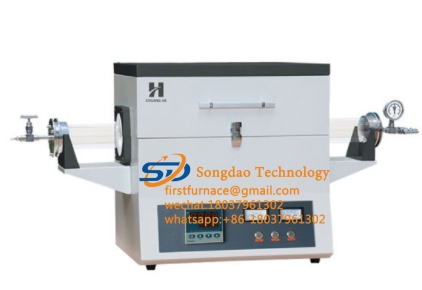- 21
- Feb
Precautions for operation of vacuum atmosphere furnace
Precautions pikeun operasi tina tungku suasana vakum
A vacuum atmosphere furnace is a furnace type that can be vacuumed and can pass the atmosphere. It has many different furnace types such as box type, tube furnace, and lifting furnace. Although there are many types, the precautions during operation are not bad. Below Let’s find out:

1. High-temperature vacuum atmosphere furnaces cannot be overloaded. The maximum operating temperature refers to the allowable surface temperature of the element in vacuum, not the temperature of the heating material or the temperature around the heating element. It should be noted that the temperature of the vacuum heating element itself is 100°C higher than the temperature of the surrounding medium or the heated temperature.
2. When measuring the temperature uniformity of the vacuum atmosphere furnace, pay attention to the positioning method of the temperature measuring contact and the distance from the heating element. Use brushes, brooms or compressed air, vacuum cleaners, etc. to clean the furnace in the atmosphere furnace frequently (at least daily or before each shift) to prevent impurities such as oxide scale in the furnace from falling on the heating elements, short-circuiting, and even burning molybdenum heating rods . The bottom plate, molybdenum heating rod, furnace insulation layer and other heat-resistant steel components should be cleaned every time they are used. Knocking is strictly prohibited, and their oxide scale can be carefully removed.
3. After the furnace heats up, the vacuum system cannot be suddenly destroyed, let alone open the furnace door. Note that the vacuum gauge switch should be turned off before filling the atmosphere to prevent the vacuum gauge from aging. When the temperature is higher than 400℃, it must not be cooled rapidly. Avoid reactions between heating elements and products, especially if copper, aluminum, zinc, tin, lead, etc. come into contact with vacuum heating elements, whether it is fine powder, molten liquid or steam, etc., to prevent erosion and formation of “pits” on the surface of the electric heating element. , The cross-section becomes smaller, and it burns out after overheating. When the transmission parts are found to be stuck, inaccurate in the limit, and control failure, they should be eliminated immediately, and do not force the operation to avoid damage to the parts.
4. Heat-resistant steel components such as the bottom plate of the vacuum atmosphere furnace, molybdenum heating rods, furnace insulation layer, etc. should be cleaned every time they are used. Knocking is strictly prohibited, and the oxide scale can be removed carefully. If the iron oxide scale and other impurities are not removed in time, the molten area will ignite with the insulation layer, causing the molybdenum wire to melt.
5. After the furnace heats up, the vacuum system cannot be suddenly destroyed, let alone open the furnace door. Note that the vacuum gauge switch should be turned off before filling the atmosphere to prevent the vacuum gauge from aging. When the temperature is higher than 400℃, it must not be cooled rapidly. For the vacuum heating element, it is easy to cause oxidation when the temperature is high, the vacuum degree is not good, and the cold and heat changes are large. For molybdenum heating furnace, during normal use and maintenance, it should be cooled to below 200°C before the protective nitrogen can be stopped. The furnace door can only be opened below 80°C.
6. The cooling system is an important part of the vacuum atmosphere furnace. The cooling water circuit should be kept unobstructed, otherwise the water temperature will rise and cause the machine to stop. This is a problem that is often overlooked when the atmosphere furnace is working. It may cause major damage to the high-temperature vacuum atmosphere furnace when unattended. The purpose of treating the cooling water with the aid of biological decomposition and chemical methods is to keep the minerals in suspension and reduce the accumulation of sediment in the rubber tube, the serpentine tube and the water jacket, so that the water can flow smoothly. This is generally done by an automatic device, which can monitor the conductivity of the water, automatically replenish chemical agents, flush the waterway, and add fresh water.
